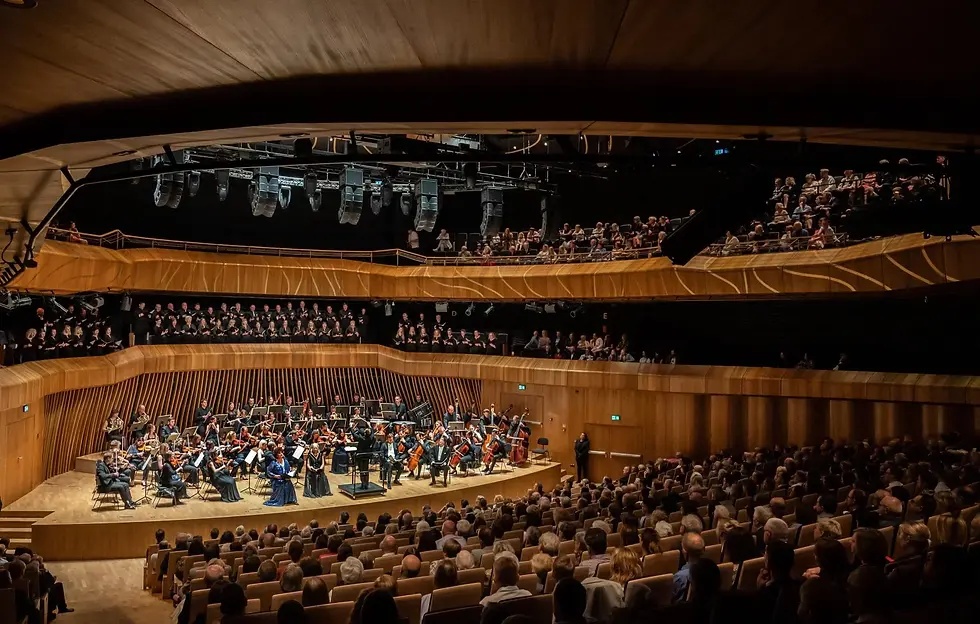FLAMENCO LAND - SPAIN IN MUSIC AND HEART No.13/4.07
- victorshramko
- Jul 4
- 4 min read
I wonder where you would like to go on this or the next vacation? What to see, try, listen to?
30 years ago, my wife, both my sons, and I had a great desire to visit Spain. We flew straight from Kuwait to Madrid, and from there we drove directly to Toledo. We were already tired, hungry, and thirsty, but we were tempted by a poster announcing a flamenco show there. As I still remember, we just left our luggage at the hotel, quickly ate a sandwich, and walked to the performance at a leisurely pace. When the music and the dancers started the show, the tiredness began to leave us quickly. Finally, we applauded the artists with enthusiasm and demanded encores.

In Poland, we have a saying: 'Life like in Madrid,' which means 'having it all' (or 'easy street'). We recently spent last Easter in Madrid, staying at the same hotel as 30 years ago opposite the Neptune fountain. The evening before our departure, where did we spend it? At the exclusive flamenco show.
Fate happened that in June, after returning from Kuwait, we attended the end of the philharmonic season in Bielsko-Biała dedicated to Spanish music! It was a brilliant concert by the great Cavatina Philharmonic Orchestra conducted by its director, an Australian of Chinese origin from the Berlin Philharmonic, Stanley Chia-Ming Dodds. (He is a Citizen of the World: prolegomenon to the 'nationality' in music!)

It is a miracle. The Orchestra was founded a year ago! After a competition, out of 850 candidates, 60 musicians were selected, both local and foreigners (even from New Zealand!). The founder of the unique building in the cosmic shape of the Earth's globe, with a perfectly acoustic Concert Hall and then the orchestra itself, was a wealthy businessman, Mr. Michał Dziuda (with the cooperation of the city of Bielsko-Biała). Just as rulers once founded theatres, museums, and philharmonic orchestras, today wealthy people can do the same. And they do! (Although unfortunately not very often, even if it is a more lasting commemoration than any statue monument!)

But let's get back to Spain. The captivating and delightful Spanish music program included works by Spanish (but not only) composers. It may seem strange that three out of six composers were foreigners.
A Viennese of half-Polish descent, Maurice Moszkowski (1854-1925) was a darling of the European public as a pianist and composer. He was fascinated by Spanish folklore, and he fascinated the European audience of his time with his Spanish Dances, in which we hear the crazy clatter of the dancers' boots.
Manuel de Falla (1876-1946) is one of the most outstanding Spanish composers. His 'Fire Ritual Dance' (Danza ritual del fuego) from the ballet 'Enchanted Love' (El amor brujo) hypnotizes with its drama and mysticism. And this super hit is the apotheosis of FLAMENCO!
Joaquin Rodrigo (1901-1999) was a composer who was blind since his childhood. After losing his child, he wrote a piece for guitar and orchestra that touches the heart of every listener. The winner of 19 greatest guitar competitions, Marcin Dylla, played brilliantly that 'Concierto de Aranjuez,' one of the most popular hits of Spanish music.
French Emmanuel Chabrier (1841-1894) based his most popular piece, the symphonic poem 'España,' on the rhythms of the bolero, jota, and seguidilla. This work, with its excellent orchestration, earned him a unique place in French music.
Enrique Granados (1867-1916), also one of the greatest Spanish composers, was represented at the concert by his Danzas españolas & Andaluza, (Andalusia was the birthplace of flamenco.) Granados and his wife, Amparo, died tragically on a ship torpedoed by a German U-Boat submarine. It was WWI. They were coming back from a tour of the States, which culminated in the premiere of his opera, 'Goyescas' (inspired by the paintings of Francisco Goya) and a ball given by the US President. It was the war that suddenly, cruelly, and senselessly broke his flamenco melody forever!
Spanish say: Flamenco is a way of life. Flamenco is not just sounds; it is a certain philosophy of life, culture, way of thinking, a different scale of values, so if you do not have all these elements in you, you cannot truly understand flamenco.
Flamenco is Spain, and therefore Spain expresses itself best in music, dance, and singing.
But the aforementioned concert could adjust the belief that only a Spaniard is able to express flamenco (like, for example, not only a Pole - Chopin's Mazurkas). Not only native, but foreigner too. Music expresses greatly the heart and mind of its native place, but if you use your heart and mind, it means love and understanding, you would be everywhere home. Music has no borders.
Enough words.
Let us play: Manuel de Falla – Danza ritual del fuego (from ballet El amor brujo)

Written by
Cezary Owerkowicz
Co-founder of Kuwait Music Academy and
Director of Treasure of Talents Festival in Kuwait
_edited.png)






